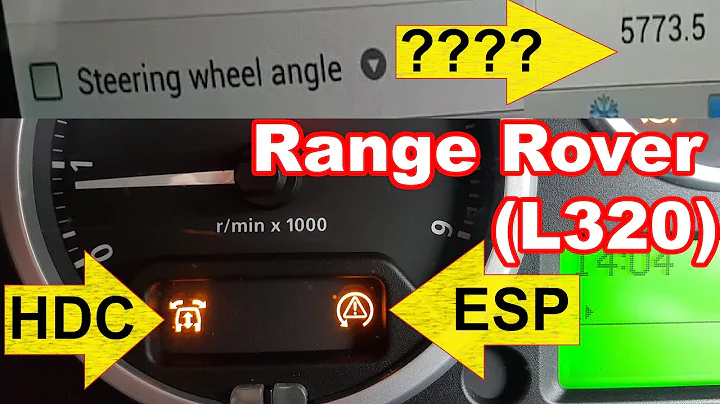Mastering Tractor Hydraulic Hose Repairs: A Comprehensive Guide
Table of Contents
- Introduction
- Symptoms of a Hydraulic Hose Brake
- How to Detect a Leak
- Fixing the Leak
- Replacing the Hose
- Testing for Leaks
- Safety Precautions
- Common Mistakes to Avoid
- Conclusion
Introduction
Hey there, DIY enthusiasts! Today, I'm here to share with you a practical guide on dealing with hydraulic hose leaks in your tractors and other heavy machinery. Whether you're a seasoned farmer or just enjoy tinkering around with machines, this article will provide you with the knowledge and steps needed to fix those pesky hydraulic hose leaks.
Symptoms of a Hydraulic Hose Brake 💡
Before we jump into the nitty-gritty of fixing a hydraulic hose leak, let's first understand how to identify if you have a brake in the hose. There are a few common symptoms to watch out for:
- Sudden loss of loader or implement control: If your loader or implement suddenly falls to the ground without warning, it may indicate a hose blowout.
- Ineffective lever controls: When attempting to lift or manipulate an implement, if the lever controls don't seem to have any effect, it's likely that a hose has blown.
- Excessive fluid leakage: If you notice fluid pouring out when using the lever controls, it's a clear sign of a hydraulic hose leak.
How to Detect a Leak 🔍
Detecting a hydraulic hose leak can sometimes be challenging, especially if it's a small pinhole leak. Here's a simple method to help you identify the leak:
- Wear safety gear: To protect yourself from hydraulic fluid, wear gloves, safety eye protection, and a long-sleeved shirt.
- Use a piece of cardboard: Take a piece of cardboard and move it along the hoses, checking for any hydraulic fluid buildup.
- Look for wet areas: If you see a wet area or observe moisture on the cardboard, it indicates a leak.
- Check for mist: In some cases, leaks can be so small that hydraulic fluid may turn into a mist, making it difficult to detect. In such situations, a wet cardboard may be your best bet.
Fixing the Leak 🛠️
Now that you've identified a hydraulic hose leak, let's dive into how you can fix it. Here's a step-by-step guide to repairing the leak:
- Turn off the machine: Before beginning any repair work, make sure to turn off the machine to minimize the risk of injury.
- Release the pressure: If there's still hydraulic pressure in the system, safely release it using the manufacturer's recommended procedure.
- Gather necessary tools: Get all the tools required for the job, including wrenches, a drain pan, and replacement hoses if needed.
- Remove the damaged hose: Carefully disconnect the damaged hose from the fittings, making sure to catch any fluid that may leak.
- Install the new hose: If you have a replacement hose, install it using the reverse process of removing the damaged hose. Ensure a proper fit and tighten the fittings securely.
- Secure the hose: Once the new hose is in place, use hose clamps or protective sleeves to protect it from wear and tear. Ensure that the protective covering extends to all areas at risk of rubbing.
- Test for leaks: After completing the repair, start the machine and carefully test for any hydraulic fluid leaks. Keep an eye on the repaired area for any signs of leakage.
- Conduct a thorough inspection: Take the time to inspect all other hoses and fittings for any signs of wear or potential leaks. This step is crucial to prevent future issues and extend the lifespan of your hydraulic system.
Replacing the Hose 🔄
If the damaged hose is beyond repair, you'll need to replace it. Here's a brief overview of the replacement process:
- Determine the correct hose: Measure the length and diameter of the damaged hose to ensure you choose the right replacement.
- Purchase a replacement hose: Visit your local hydraulic shop or order the replacement hose online. Make sure to provide the necessary specifications to get the correct hose.
- Follow the installation steps: Refer to the above steps for removing the damaged hose and installing the new one. Take care to follow the proper procedures and use the right fittings.
- Test and inspect: After completing the replacement, thoroughly test and inspect the new hose to ensure there are no leaks or issues.
Testing for Leaks ✔️
Once you've repaired or replaced the hydraulic hose, it's crucial to perform some tests to ensure the system is functioning properly. Here's what you should do:
- Purge the air: If you've replaced a hose, there may be air trapped in the system. Cycle the cylinder multiple times to allow the air to escape and ensure smooth operation.
- Check for leaks: Start the machine and carefully check the repaired area for any signs of hydraulic fluid leaks. Additionally, inspect all other hoses and fittings for possible leaks.
- Verify function: Test the loader or implement controls to ensure they are working correctly. Ensure that the hydraulic system is performing as expected before putting it under any load.
Safety Precautions ⚠️
When working with hydraulic hoses, it's crucial to prioritize safety. Here are some essential safety precautions to keep in mind:
- Turn off the machine: Always turn off the machine before attempting any repairs on the hydraulic system.
- Release pressure: Safely release any hydraulic pressure in the system before disconnecting or replacing hoses.
- Wear protective gear: To protect yourself from hydraulic fluid and potential injuries, wear gloves, safety eyewear, and appropriate clothing.
- Handle with care: Hydraulic fluid can be hot, corrosive, and under high pressure. Take caution while handling hoses and fittings to avoid accidents.
- Follow manufacturer guidelines: Always refer to the manufacturer's instructions and guidelines for your specific machinery to ensure you're following proper procedures.
Common Mistakes to Avoid ❌
While repairing hydraulic hose leaks, it's essential to avoid some common mistakes that can lead to further damage or safety risks. Here are a few pitfalls to sidestep:
- Neglecting regular inspections: Regularly inspect your hoses and fittings for wear and potential leaks. Early detection can help prevent catastrophic hose failures.
- Using incorrect fittings: Ensure that the replacement hose has the correct fittings and hole diameter for your specific application. Using incorrect fittings may result in performance issues or limitations.
- Poor installation practices: Take your time during the installation process and follow the recommended procedures. Rushing or skimping on proper fitting installation can lead to leaks and failures.
- Misusing tools or excessive force: When working with fittings, avoid using excessive force or inappropriate tools. This can damage the fittings or cause injuries.
- Neglecting safety precautions: Always prioritize safety by wearing appropriate protective gear and following safety guidelines. Failure to do so can result in accidents or injuries.
Conclusion
Tackling hydraulic hose leaks might seem like a daunting task, but with the right knowledge and a bit of practice, you can become a pro at repairing and maintaining your machinery. Remember to stay safe, take your time, and follow the recommended procedures. With these skills in your arsenal, you'll be back up and running in no time!







